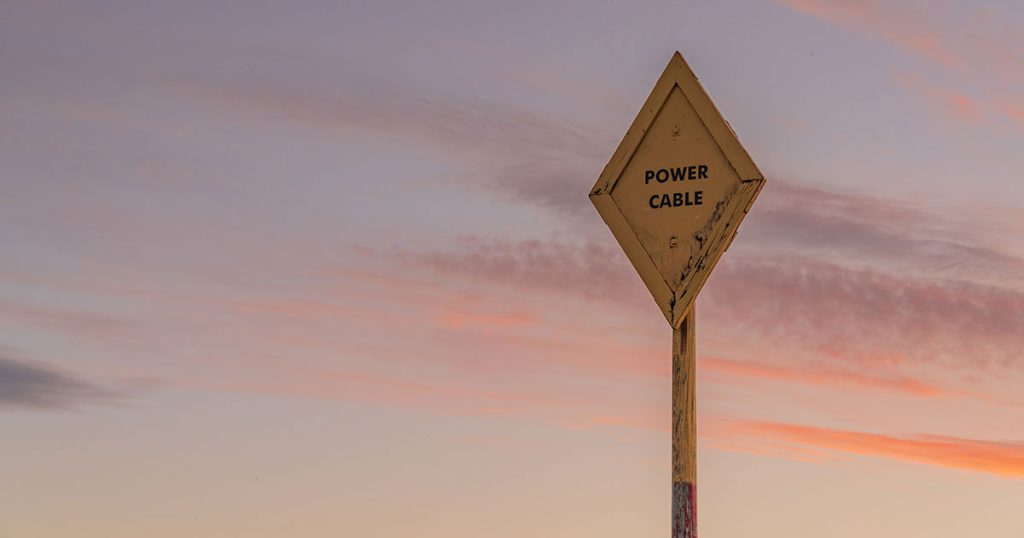Offshore Wind (OSW) is set to become a multi-billion-dollar market in the United States. However, as the industry transitions from policy pledges to the mobilization of a robust supply chain, offshore wind power projects are confronted with the potential for significant insurance claims.
According to Lloyd Warwick International’s Claims Database, 83 percent of historical insurance claims made by OSW developers worldwide between 2002 and 2019 were directly attributable to cable-related failures. While outages in submarine cable systems should be anticipated, they should not be accountable for over 80 percent of system failures.
For further context, the records show that 57 of the last 60 offshore wind farm construction projects filed cable-related claims, with the average insurance claim carrying a cost of $2.5 million. Suffice to say, the stakes are high.
Figures of this order would likely cripple the present-day submarine Fiber Optic Cable (FOC) industry. Fortunately, subsea FOC developers have a long history of dealing with cable-related issues—after all, undersea communication cables have been installed on the seabed since the mid-1800s, whereas the first OSW farm was only inaugurated in 1991. Considering the disparity in the failure rates and insurance claims, it stands to reason that there may be undersea cable project lessons learned from the FOC industry that could prove beneficial to OSW developers in the US.
From our discussions with OSW experts, most cable-related failures stem from the systemic lack of continuity in the chain of accountability; as the project moves from design and engineering, through developer, installer, and operator, project continuity is lost and with that, accountability for product defects. The addition of a Project Management group, one that takes a holistic approach to delivering multifaceted offshore subsea engineering solutions and has a proven track record of delivering submarine cable network projects should be a priority, as it is for the submarine FOC market.
At OSI, we specialize in subsea network procurement, design and installation, and we take a full life-cycle approach to project management. We have been working on cable projects around the world for two decades now, and this experience has enabled us to develop and refine an exclusive approach to cable failure mitigation.
Subsea cable failure protection—both for OSW and FOC—begins at the design phase, both for the route and the cable. The desktop study (DTS) will identify risks associated with landing locations as well as documented marine hazards, such as reefs, wreckages, currents, and other infrastructure (cables, pipelines, etc.). A detailed DTS will ensure that the survey portion will be performed in the most efficient manner, having defined the most appropriate survey locations. OSI has been involved in dozens of DTSs, both as lead researchers and as reviewers.
The survey will further identify the safest route for the cable. If burial is required to protect the cable, soil cores will be taken to understand burial feasibility. This information, along with bathymetry and sea-bottom conditions, will feed into the definition of the route. The route information will also be used to define cable protection required (such as armoring and/or additional external protection (split pipe, mattresses, etc.). Once again, OSI has reviewed thousands of survey charts to properly identify the safest route and the cable protection required for the cable systems we have developed.
From a cable manufacturing perspective, the cable design needs to be verified for compliance with the needs of the project, through Product Design and Manufacturing Process Qualifications. This verification would also include a thorough review (and requirement for) laboratory product testing as well as field/sea trials to confirm fitness for use.
It is imperative to have Subject Matter Experts (SMEs) who can review and understand whether the parameters tested against, as well as the results of the tests themselves, are applicable and sufficient to approve the cable and cable-related products for use in the project. Consequently, a Factory Acceptance Testing program will follow, subject to SME approval of products being released and accepted for installation. OSI has a network of recognized SMEs across the globe to aid in this task.
A well planned, carefully managed installation phase, again be it for submarine power cable installation or that of a subsea FOC, is critical for exhaustive cable failure mitigation. The cable installation methodology and procedures need to be detailed and agreed months in advance of the field work. Then it is essential to have knowledgeable representation aboard the installation vessel that can oversee the process, identify and address any areas of concern, and communicate progress to the client remotely. Any concerns about the installation must be addressed at this point, as once the cable installed and in service, it will be more challenging and expensive to make any changes. Again, OSI has decades of experience and vetted installation experts to ensure the smooth management of these decisive phases.
Post-lay inspection, as well as final system testing, will confirm that the cable was installed and operating as intended. After the main cable lay installation is complete, inspection with Remotely Operated Vehicles (ROVs) will dictate if any remedial burial or added protection measures are required. As part of our turn-key system development services, OSI has also been directly involved in the commissioning and acceptance phases of many high-profile cable projects.
At OSI, we believe that the seamless management of these steps is as critical to US offshore wind power development as it has proven for the FOC industry. If correctly applied, the Lessons Learned from the undersea telecom cable industry should improve the reliability of offshore wind projects and reduce their costs. We also recognize that subsea cable projects require ongoing monitoring and intervention strategies, and we have a long history of reviewing continuous project data to assess cable installation and identify potential areas of future failure risk.
Get in touch to find out more about OSI’s project management capabilities.
